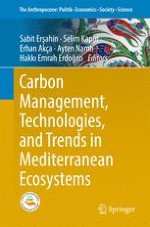This book pursues a unique approach, investigating both the ecological and socio-economic aspects of carbon management in Mediterranean ecosystems. All chapters are based on papers originally presented at the 1st Istanbul Carbon Summit, held at Istanbul Technical University, 2–4 April, 2014, and revised following a peer-review process.
The book addresses the summit’s three main themes – carbon management, carbon technologies, and carbon trends – while also offering chapters on the economic aspects of carbon management and the ecological aspects of the carbon cycle. The chapters on economic aspects analyze the carbon trade and its institutional, political, and legislative structures in different Mediterranean nations, while those on ecological aspects review the discourse on and analysis of the related ecological factors and their feedback due to governance processes.
